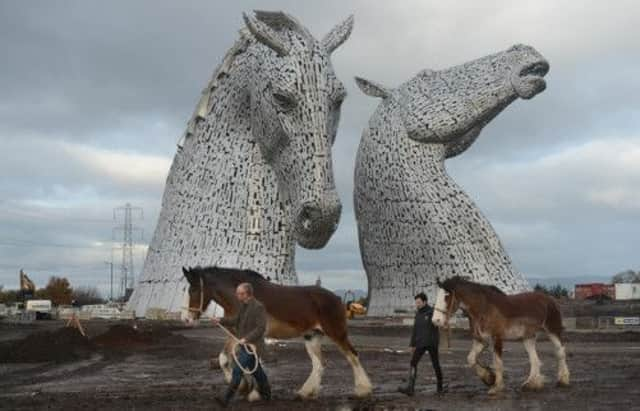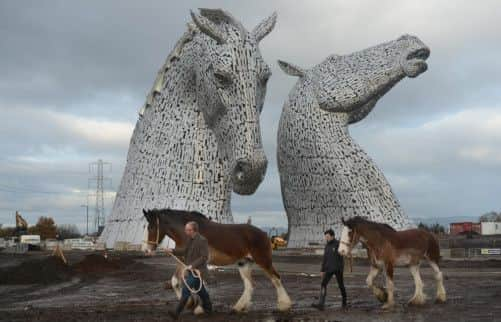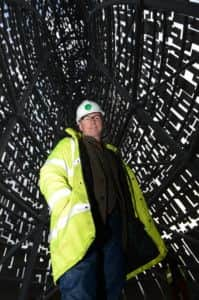Plans to take visitors inside Kelpies sculptures


Now plans have been unveiled to allow members of the public to travel up inside the world’s biggest horses heads which have been completed on previously derelict land near Falkirk bordering the M9 motorway.
Developers behind The Kelpies, the 100 ft tall sculptures billed as Scotland’s answer to the Angel of the North, are already exploring plans for a £1 million addition which will let people tour around the vast structures, which feature 600 tonnes of steel in total.
Advertisement
Hide AdSculptor Andy Scott, who has overseen the project since his first involvement sketching out ideas for the project in 2006, visited the site to mark the completion of the five-month construction project at the heart of Scotland’s new “eco-park”.


Around 400,000 people per year are expected to visit The Kelpies - which are named after the mythical Scottish “water horses” - when they are officially opened to the public in April.
Two of the UK’s biggest works of art, The Kelpies are the centrepiece attractions in a new £43 million parkland area which has been created next to the Forth & Clyde Canal, near Falkirk Football Club’s stadium.
Construction of the £5 million sculptures, which have been inspired by the industrial heritage of central Scotland and the tradition of “working horses” in the area, only began in June, although work on the wider Helix project, which features a beach, a lagoon, cycle paths, walkways and a new turning circle for boats opening up access to the Firth of Forth, which The Kelpies stand beside.
The entire project was given the green light in 2007 when the Big Lottery Fund awarded £25 million to the regeneration scheme - one of its biggest ever grants.


Steve Dunlop, chief executive of Scottish Canals, said: “We’ve just finished the first phase of The Kelpies with the construction coming to an end.
Advertisement
Hide Ad“The area around them is being landscaped over the next months before we have a big three-day opening event in April and we’ll be opening a visitor centre in August of next year, which will cost just under £1.5 million.
“We’ve had some designs done and are currently seeking funding for another phase, costing around £1 million, which will take people up inside The Kelpies, and allow them to get right inside their heads. That’s definitely the ambition.”
Advertisement
Hide AdScott, who is based in Glasgow, based his original design on Carnera, a Clydesdale horse which pulled the wagon for the then Falkirk-based soft drinks firm AG Barr in the 1930s.
Construction
The steel for the sculptures was fabricated in Yorkshire and more than 100 separate deliveries were needed to transport the 17,000 different parts to the Falkirk area.
Scott, who was also the designer of the horse sculpture on the M8 motorway, on the outskirts of Glasgow said: “It’ll be eight years in January since I was first approached by some of the engineers at Scottish Canals.
“At that time they had a vague notion of something vaguely horse-link for the canal extension they were planning in the area and this is what we’ve ended up with.
“The scale and impact of them was pretty much decided on from the beginning.
“We had to look at how they would fit in the landscape, with the Ochil Hills in the distance, their close proximity to the motorway, and other factors to do with the engineering of the canal. A lot of things basically dictated that very large structures would be required. All the issues were ironed out right at the beginning.
Advertisement
Hide Ad“I’m very proud of them. You’re always nervous when you do any kind of public sculpture, but the public response to them so far, particularly in the Falikrk area, has been absolutely phenomenal.
“In some ways, they’ve been exactly as I imagined, but I could never have got my head around how they seem to respond to the light and the weather and they way they sit in with the landscape is a lot better than I expected.
“I hope people will view them with pride and they’ll soon pass into the common ownership of the country.”